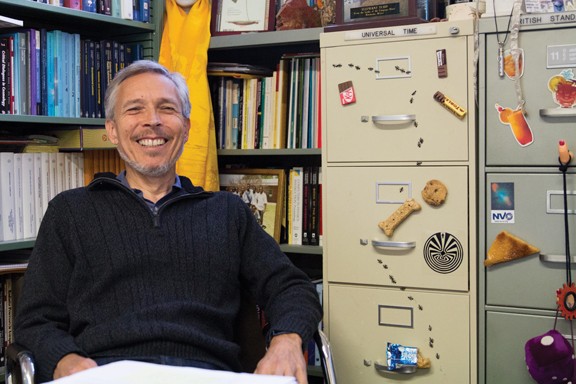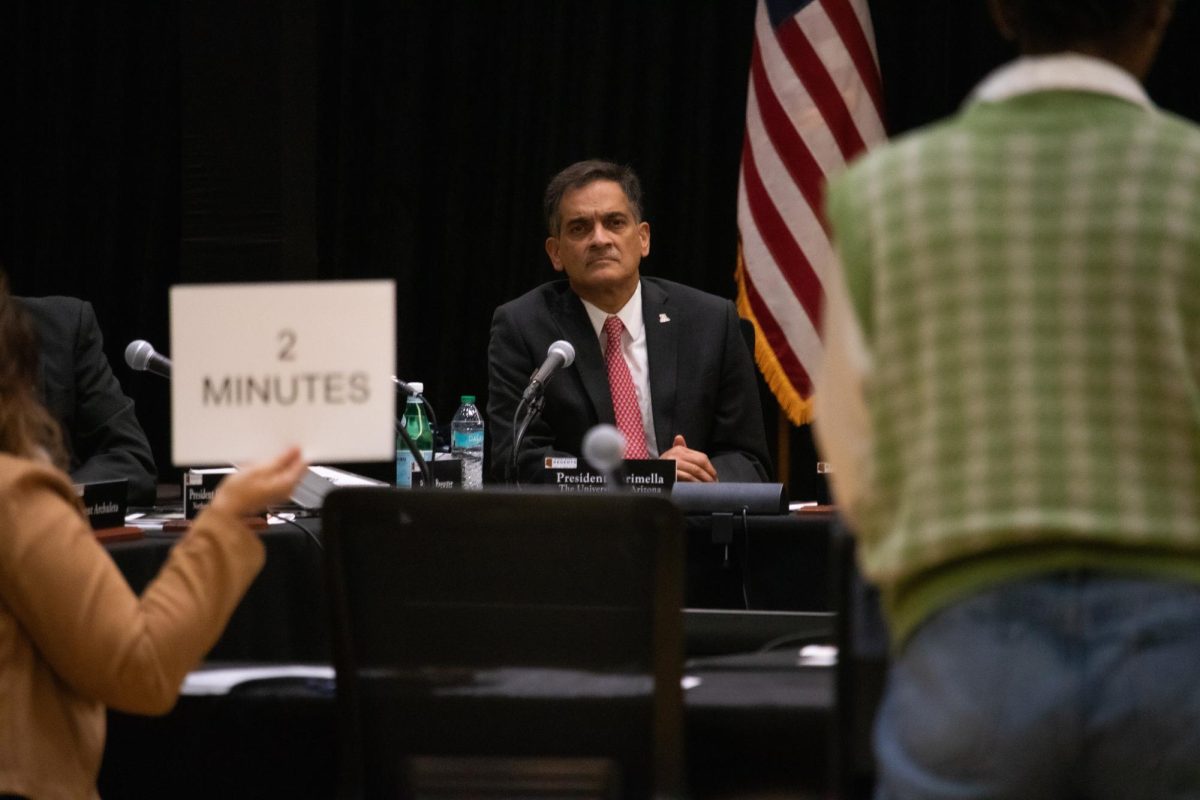Paper timelines fan out across the floor, filled with pictures of the universe and human culture. They’re all supposed to show moments between the Big Bang and now in chronological order, but all of them vary.
Around these pieces of paper stand groups of Tibetan monks debating and defending the timelines they’ve arranged. To an outsider who doesn’t speak Tibetan, the energy in the room would be overwhelming. The monks are shouting and shoving, but if you look closely, you can see the smiles on their faces and hear the laughter amidst the arguing.
Chris Impey, UA astronomy professor and deputy head of the department of astronomy, had set aside a half hour for this timeline building exercise. But an hour and a half later, lunch time had come and gone, and the monks were still debating.
“For a teacher, the mother lode is just when you can be irrelevant,” Impey said. “When you can set up a learning and teaching situation, and then you don’t need to be there, it all just happens.”
This is one exercise Impey used in January while with the Science for Monks program in India. The program gives Western educators the chance to teach science workshops in the Tibetan monastic community in India.
“I came in with a clean slate, but I learned a lot,” Impey said. “It changed me because they view the world differently, and it’s an interesting way to be.”
Impey has taught cosmology with the program every year since 2008. Through a grant from the John Templeton Foundation, he is in the process of publishing a book that details his experiences called “Humble Before The Void: Teaching Cosmology to Buddhist Monks.”
Impey says he hopes readers take away a real sense of who the monks are. Most of them have been exiled and living like orphans for most of their lives. Despite that, they’re lighthearted and fun. There’s a lot of laughing in the classroom, he said.
“We had a lot of … outbursts of laughter and jokes,” said Tenzin Sonam, an education graduate student who accompanied Impey as a translator.
While in India, Impey took a tour of a large Tibetan children’s school. The most prominent wall in the school ran the length of a soccer field. It was large and white with letters 20 feet high that said, “Others before self.”
“I was thinking, wow, couldn’t really imagine seeing that in an American high school,” Impey said.
Despite any cultural differences, Impey said the monks always tried to express that they don’t fit into the American stereotypes of Tibetan monks. They’re not always meditating, nor does the motto “everything is suffering” accurately describe their beliefs, he said.
“They think that people just look at them and put them in some strange box because they’re too different — different by being monks, different because it’s Buddhism, different because it’s Tibet, different because they look different,” Impey said. “They would say, ‘We’re just like you. Sure we’re monks, and sure we’re from Tibet — and that’s a weird and exotic place and nobody really knows about it — but we have aspirations and dreams and hopes and everything,’”
In recent years, the goal of the program has expanded. It now aims to teach monks how to teach other monks in order to reach more people.
Despite the larger challenge, Impey says he’s looking forward to returning to India.
“I’m going to keep doing this,” Impey said. “I’ll probably go back every year. It’s just one of those things where once you get into it, you just don’t see any reason not to do it.”









